History's greatest Grand National sires – including an unbelievable tale of one in his centenary year
Martin Stevens takes a look at some of the leading sires of the Aintree showpiece
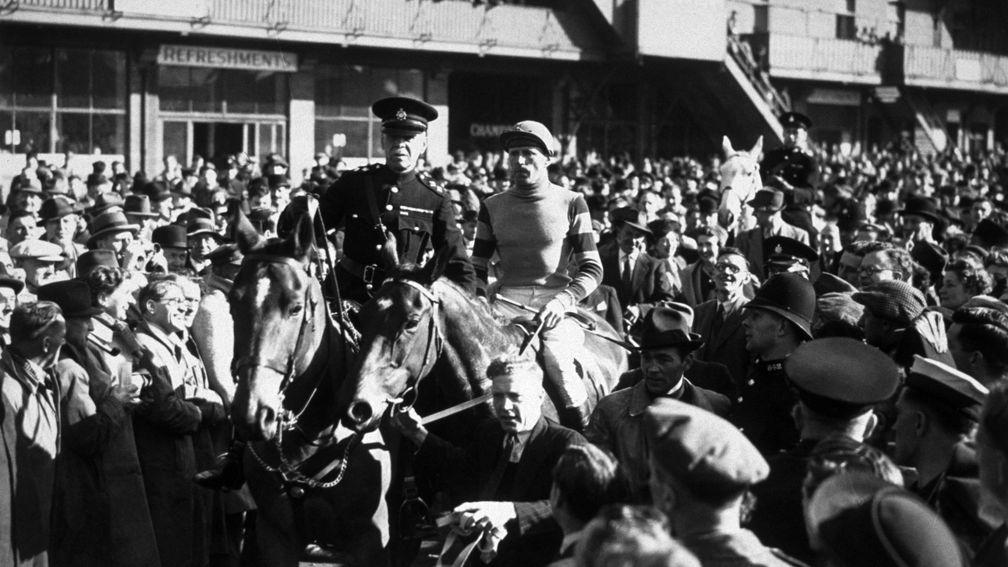
Good Morning Bloodstock is the Racing Post's daily morning email and presented here online as a sample.
Here, Martin Stevens focuses on the leading sires of the Aintree showpiece and relays a colourful account of one legend of Liverpool - subscribers can get more great insight from Martin every Monday to Friday.
All you need do is click on the link above, sign up and then read at your leisure each weekday morning from 7am.
The ultimate Grand National sire? The modern standard is set by Old Vic, source of winners Comply Or Die and Don’t Push It, both of whom finished placed in attempting to defend their titles the following year, as well as runners-up Black Apalachi and Sunnyhillboy and third-placed VIcs Canvas.
Montelimar also put two winners of the Aintree spectacular on the board in the new millennium, in Monty’s Pass and Hedgehunter, both of whom achieved top-four finishes as returning champion. He also came up with It Takes Time, fourth behind Hedgehunter in 2005.
Not forgetting another sire whose progeny relished the Grand National test in Oscar, who delivered history-making winner Minella Times, dual first-four finishers Any Second Now and Oscar Time, and third placed Teaforthree.
Roselier ruled the roost in the 1990s and early 2000s, supplying two winners in Royal Athlete and Bindaree, a really admirable dual runner-up in Suny Bay, the third and fourth home in 1994, Moorcroft Boy and Ebony Jane, and another fourth-placed finisher in Kingsmark.
The late 1980s and early 1990s belonged to Politico, thanks to two sons. Party Politics won in 1992 and finished second to Royal Athlete three years later, and Durham Edition finished second in 1988 and 1990.
Spare a thought for Crash Course, who in this period was represented by a winner in Rough Quest and a runner-up in Romany King, and held the dubious honour of siring the first and third past the post in the farcical void race of 1993, Esha Ness and Romany King again.
The pick of the 1980s was perhaps Gala Performance, who was best known as the source of 1970s hurdling great Monksfield (incidentally the damsire of Monty’s Pass) but who later provided two Grand National standing dishes in Greasepaint, runner-up in 1983 and 1984 and fourth in 1985, and West Tip, successful in 1986, fourth in 1987 and 1988, and second in 1989.
Greasepaint and West Tip thus gave Gala Performance top-four finishers in this supposed lottery of a race for seven years in a row, which is quite a feat.
Menelek joined the roll of honour of sires of multiple Grand National winners a few years earlier, with one in the 1970s – Red Rum’s conqueror Rag Trade – and another in the 1980s, in Hallo Dandy, who had warmed up with a fourth-place finish in the preceding year.
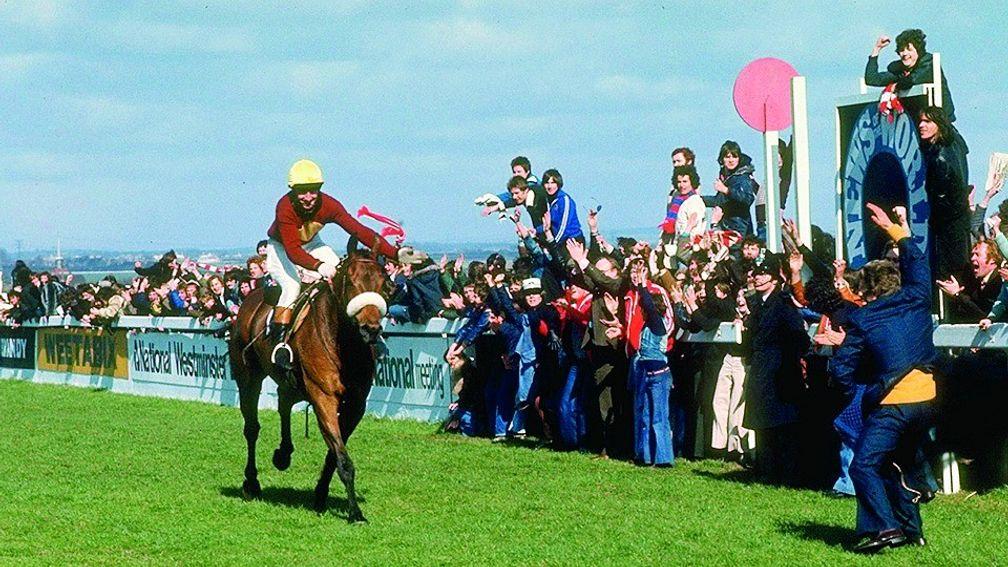
Red Rum’s sire Quorum gets the nod in the 1970s, thanks to the Aintree legend’s three wins and two seconds.
Escart also deserves mention, though. He was the source of L’Escargot, who was the other horse to beat Red Rum and ran placed in the two preceding editions. He also provided another third-place finisher in General Symons, and was later represented as the damsire of winner Little Polveir.
Escart’s one-time Blackrath Stud colleague Vulgan was the undisputed king of the Grand National in the 1960s and early 1970s. As recently discussed in this space, he produced a hat-trick of winners in Team Spirit, Foinavon and Gay Trip, with Gay Trip also finishing second and Team Spirit also managing a fourth.
For good measure, Gay Trip led home a one-two for Vulgan in 1970, when he beat paternal half-brother Vulture into second, and the sire’s daughters went on to produce two winners in the 1980s, Corbiere and Last Suspect.
The only sire whose influence in the Grand National in the post-war period rivals that of Vulgan was the mighty Cottage, whose long spell at stud yielded three winners: Workman in 1939, Lovely Cottage in 1946 and Sheila’s Cottage in 1948.
Furthermore, Workman also finished third in 1938, and Housewarmer and Happy Home ran fourth behind Lovely Cottage and Sheila’s Cottage respectively. The sire was approaching the peak of his powers when the race was cancelled for five years due to World War Two, so his achievements can be upgraded.
This year marks the centenary of Cottage’s retirement to Grange Stud. You might have noticed that the anniversary was celebrated in the current Coolmore brochure, with the reproduction of an original newspaper advert for the son of Tracery’s services.
It is amusing to see that the art of stallion hype hasn’t changed much in the past 100 years. Some of the following rhetorical flourishes might sound familiar.
“COTTAGE (1918), a winner,” it is headlined in big, bold print, before cramming in as many notable ancestors as possible by continuing: “By Tracery out of Casetta by Marco out of Creme Simon, by St Simon out of Settlement, by Bend Or.”
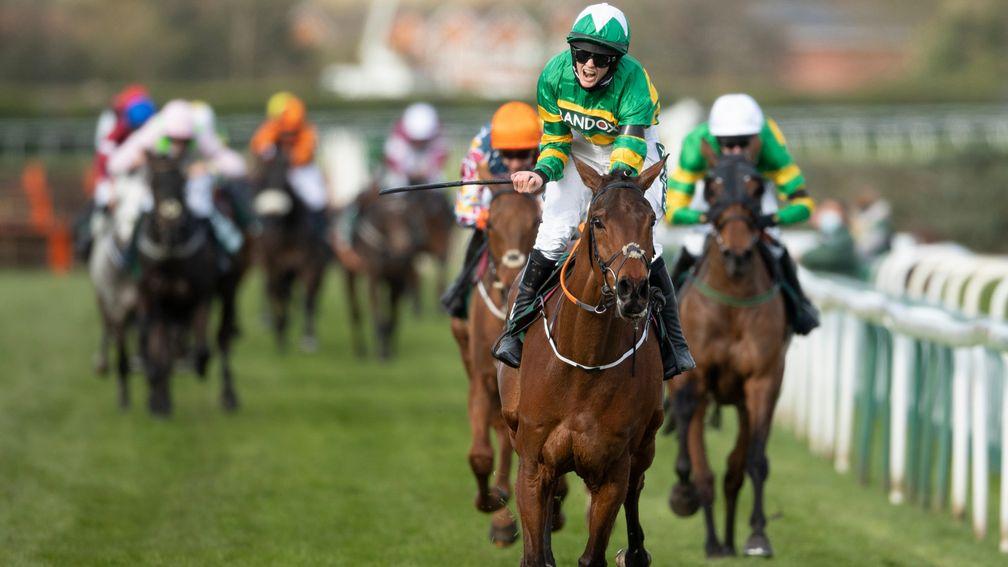
It goes on: “Cottage is considered to be one of Tracery’s best-looking sons, is a brown horse full of size and quality. Will serve 20 approved thoroughbred mares at £9 19s, 0d (first season).”
Some things have changed irrevocably though, and in a real sign of the times, it notifies readers that the stud “adjoins Railway Station, GSWR”. If that whetted the appetite of 1920s breeders, the bottom of the advert directed them as so: “Further particulars, MICHAEL J MAGNIER”.
Magnier had done a fine job of accentuating the positives, as Cottage’s strengths apparently weren’t nearly as obvious as they were made out to be in the advert.
After he had established himself as one of the best National Hunt stallions of the early 20th century, legend grew about how he had made it against all odds.
JH Murdoch gave a particularly colourful account of the sire's rise to fame in the London Weekly Dispatch in 1949. It’s so rich with detail, much of which sounds far too good to be true, that it’s worth reprinting here.
It went: “This is the story of a racehorse who could seldom win – a big-boned, ugly duckling of the turf who yet became a golden goose laying a £500,000 egg.
“Only once in nearly 30 years did the winner’s flag go up for this big, sulky horse – even then he twitched, shuddered with bad temper as he was led into the winning enclosure. His flanks steamed. A white sud of froth was on his mouth. It was only an obscure little country jump meeting, but everybody knew enough to stand clear of him.
“The owner scratched his cheek, worried. ‘Can’t see a lot of sense in keeping that horse,’ he said. ‘Too damn bad tempered to win races’.
“He had worked patiently with a lifetime’s skill for six years to make a successful contestant for jumping honours out of this huge, glowering brute whose sire was the St Leger winner of 1912, but who had little else to his good name.
“Evil-tempered – and scoffed food like a buffalo. One could not keep on throwing good money away . . .
“He led his stable’s problem child to Newmarket Bloodstock Sales in 1923. Bids started slowly for the big horse (16.3 hands) that had won only one race in six years – who was celebrated for emptying the entire paddock with a snorting cascade of malicious hooves whenever he paraded near other horses.
“Jockeys who had lurched unhappily on those petulant shoulders at starting-tapes, while the horse showed the whites of his eyes at neighbours in the line-up, whispered to friends. The bids dwindled.
“An Irishman raised his cane. ‘I’ll bid five-fifty guineas,’ he called. The auctioneer, surprised, grateful, nodded quickly. The owner smiled with blatant relief.
“That night the snarling, protesting stallion made a notable effort to sink the Liverpool landing stage rather than be loaded aboard the Dublin ferry.
“His handlers spoke to him in gentle, Irish voices. He heard, for the first time in a life that was to create racing history down the years, the blurred, amiable County Cork tones of Mr Michael Magnier, then 46-year-old proprietor of Grange Stud Farm, left to him by his grandfather, in the Cork hamlet of Fermoy.
“The stallion raised his flattened ears, uncurled his lips, slithered gracelessly up the loading-plank. These apparently were men who understand the unspeakable sadnesses that can afflict a horse’s heart.
“Yet even they did not realise, as they wiped their brows, that they were handling the most remarkable and potentially valuable horse in the history of modern racing!
“For this unheralded race-track reject, with one contemptible rosette of victory to pin upon his stable door, was the stallion Cottage – destined to become famous in racing records as the supreme and unsurpassed sire of Grand National winners!”
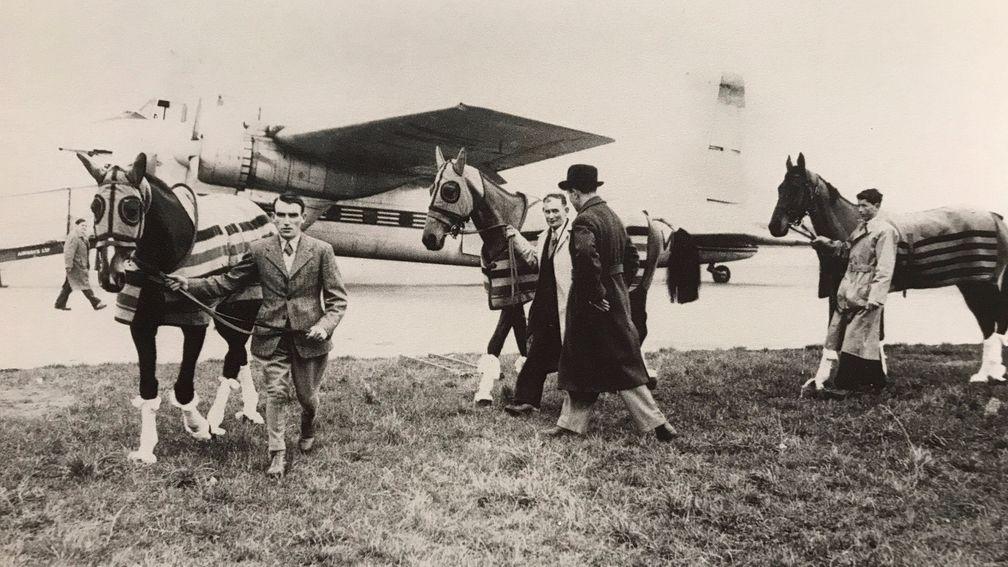
Phew. I thought I was prone to exaggeration, but I’ve got nothing on Mr Murdoch. He wasn’t done there, either. After breathlessly listing all of the sire’s best horses, including of course the three-time Cheltenham Gold Cup winner Cottage Rake, he continued the unbelievable (literally, in parts) story.
“What was bad temper in the sire became racing courage and staying power in the colts,” he wrote. “It all took time. When Mr Magnier got his unsuspected treasure to Grange Farm that day in 1924 Cottage belted the farrier out of his stall, would not be exercised, refused to tolerate any other horse within striking distance.
“The patient Magnier family, who understood horses, gave Cottage the run of their 160 acres, let him take riderless gallops. They put his stud fee at a modest nine guineas.
“One of the first progeny, Rose Cottage, started winning races with flawless style and classic determination. Up went the stud fee to 19 guineas. Then to 25 guineas. That was not much for top-quality bloodstock.
“It stayed 25 guineas until a frosted morning of January 6, 1942, when an early stable-boy found Cottage stiff and dead from heart failure in his warm stall – while nearly every day’s racing was beginning to bring news of fresh victories for his descendants. Their triumphs are currently estimated at £500,000.
“Today Cottage lies buried under a mound of undecorated earth in the green front lawn of Grange Farm. Thomas Magnier, new heir to the stud farm, intends to prepare a memorial detailing the more famous of Cottage’s descendants and their greatest victories.
“‘But what’s the use, until a few more Grand Nationals have been run, and there are a few more names for the roll or honour,’ he says confidently.
“For there is no doubt that, although Cottage never once raced in Ireland, he is by a long way Ireland’s most famous racehorse.”
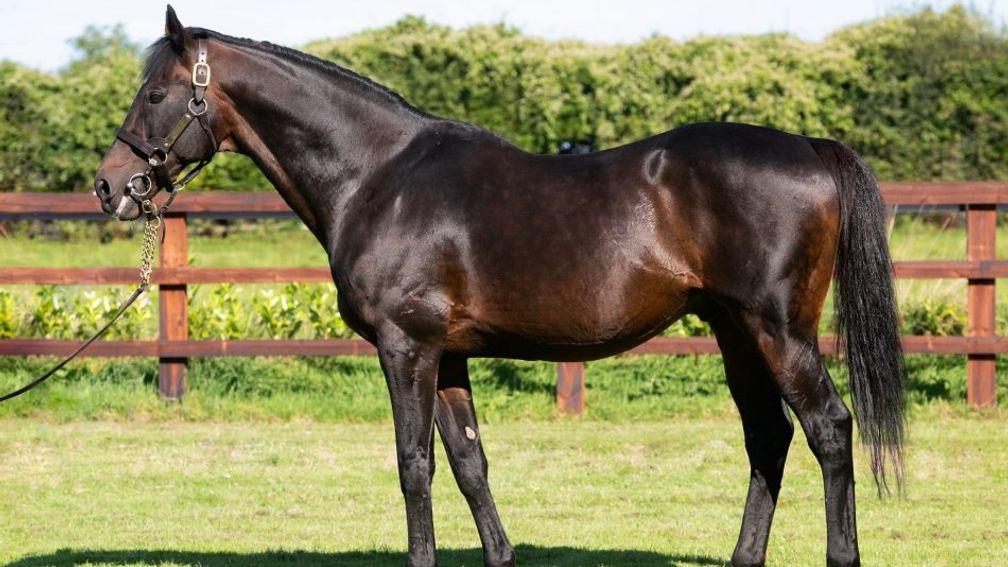
Cottage didn’t add to his Grand National tally, but the London Weekly Dispatch’s scribe was right, even if he did lay it on with a trowel: he was indeed a great jumps sire, and his Aintree record has since been matched only by Vulgan.
If he really did have to overcome all of those faults, his achievements are all the more praiseworthy.
It goes to show that sires shouldn't always be discounted on the basis of behavioural issues or perceived physical flaws. Or perhaps the lesson is rather that journalists will sometimes stretch the truth to make a good story.
Ahem. Moving swiftly on, the most fitting winner of the Grand National on Saturday in light of it being 100 years since Cottage retired to Grange Stud, is Limerick Lace – the sole representative in the race of Walk In The Park, another fine sire who now graces the stallion boxes there.
Walk In The Park would also emulate Cottage in getting a rare female winner of the marathon if Limerick Lace managed to outstay her rivals, 76 years after Sheila’s Cottage did it.
Walk In The Park would be breaking new ground if Limerick Lace were to triumph, but Authorized, Jeremy and Yeats all have realistic chances of supplying a second individual winner and joining the ultimate Grand National sires Cottage, Vulgan, Menelek, Roselier, Montelimar and Old Vic in doing so.
Refer a friend!
If you have a friend who would like to receive Good Morning Bloodstock please send the following link where they can sign up.
What do you think?
Share your thoughts with other Good Morning Bloodstock readers by emailing gmb@racingpost.com
Must-read story
“We’re thrilled Naas racecourse has agreed to host the trackwork to enable this exciting new breeze-up sale in Ireland,” says Goffs group chief executive Henry Beeby as the company announces a new fixture for its calendar in 2025.
Pedigree pick
Well-bred Aquacell faces a pair of rivals with strong placed form in Cuban Melody and So Logical when she makes her debut for trainer Jane Chapple-Hyam in the seven-furlong fillies’ maiden at Chelmsford on Thursday evening (8.00), so stakes need to be kept to an absolute minimum if taking the chance that blood will out.
The three-year-old is a Churchill half-sister to Fontainebleau Listed winner All Rumours and Listed-placed Ultramarine out of Aquamarine, a Group 3-winning Deep Impact half-sister to Prix de Diane third Burgarita, from the wonderful Wildenstein ‘A’ family of Arcangues and Aquarelliste.
Aquacell represents the China Horse Club, having been bought for €300,000 from the Arqana August Yearling Sale of 2022. Full marks to connections for picking another name beginning with ‘A’, maintaining an unbroken line in the distaff line that goes back to the seventh dam who was foaled in 1953.
Don’t miss ANZ Bloodstock News
Subscribe for the latest bloodstock news from Australia, New Zealand and beyond.
Published on inGood Morning Bloodstock
Last updated
- Heart or head? Limerick farmer faces enviable dilemma now he owns a highly valuable filly
- New Batsford boys bring fresh impetus and good value to Gloucestershire stud
- Cause for alarm as one of the most successful British jumps breeders switches focus to the Flat
- Kalpana likely to pull plenty of buyers towards Gravity at Park Paddocks
- Nap hand to note on a weekend when Auteuil ought to rival Cheltenham for your attention
- Heart or head? Limerick farmer faces enviable dilemma now he owns a highly valuable filly
- New Batsford boys bring fresh impetus and good value to Gloucestershire stud
- Cause for alarm as one of the most successful British jumps breeders switches focus to the Flat
- Kalpana likely to pull plenty of buyers towards Gravity at Park Paddocks
- Nap hand to note on a weekend when Auteuil ought to rival Cheltenham for your attention